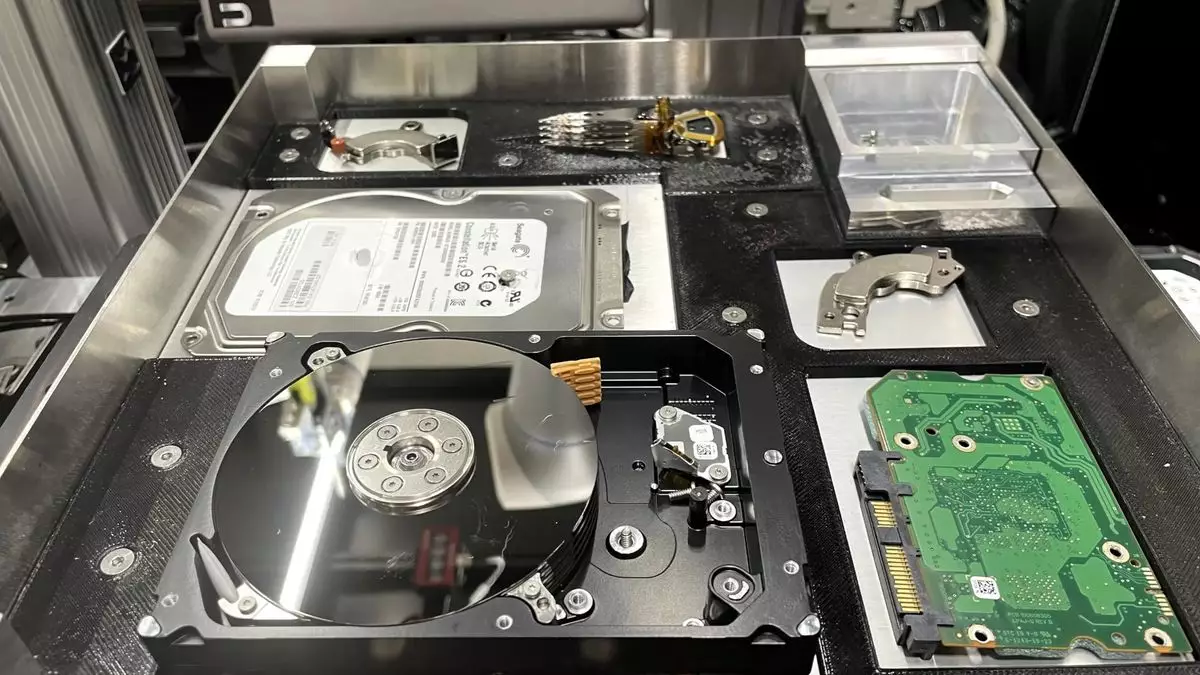The digital era has brought immense convenience and technological advancement, yet it has also succumbed to a less glamorous problem: electronic waste, commonly known as e-waste. Globally, an astounding 50 million metric tons of e-waste are generated annually, a significant portion stemming from discarded hard drives. Companies routinely resort to shredding and grinding these devices to protect sensitive data, unfortunately thwarting the potential for recycling valuable materials. This unsustainable practice raises a critical question: how can we dispose of electronic devices without exacerbating the environmental crisis?
Microsoft has emerged as a pioneering force in addressing this issue. In response to the disconcerting statistics surrounding hard drive disposal, Ranganathan Srikanth—a principal data scientist at the company—initiated a project during the Microsoft Global Hackathon in 2022. The project, titled Secure and Sustainable Disposal of Hard Disks, aims for an ambitious target: achieving a 90% reuse and recycle rate of all hard disks by 2025. This vision aligns seamlessly with the growing demand for sustainable practices in an age where data generation is incessant and the lifespan of technology appears to be shortening.
Incorporating robotics and artificial intelligence into the disassembly process appears to be the game changer. With a staggering estimated 20 to 70 million hard drives discarded annually, manually taking apart these devices is simply impractical. Thus, the initiative leverages advanced machinery and AI algorithms to efficiently disassemble hard drives, sorting parts meticulously and preparing them for recycling—especially the rare neodymium magnets which hold substantial value.
While the ambition is noble, the implementation of robotic disassembly is not without significant challenges. Although hard drives may share general dimensions, the intricacies involved in identifying specific screws and components require advanced machine learning capabilities. Training AI to recognize and differentiate these parts can be a monumental task, necessitating substantial data input and refinement to achieve precision. Current prototypes demonstrate progress, yet a fully operational and scalable solution remains on the horizon.
The educational video covering the project provides a glimpse of the efforts made thus far. Though still in its nascent stages, the project showcases the potential for robots in tackling the disassembly of technological products at scale. This innovative application of robotics has generated interest in the field, suggesting that other organizations may soon follow suit in exploring similar sustainable disposal methods.
Interestingly, the conversation about sustainable technology disposal does not conclude with hard drives. Microsoft’s approach opens the door to consider broader applications for e-waste management, specifically in recycling entire computers—laptops and desktop systems that are far more intricate than their hard drive counterparts. This complexity may present significant challenges, but it also signals an opportunity to recapture a wealth of reusable materials.
As engineers grapple with deconstructing more complex electronics, the application of AI and robotics could lead to remarkable breakthroughs. Ultimately, as technology continues to proliferate, finding sustainable methods for disposing of electronics will become increasingly paramount. Both governmental policies and corporate strategies must evolve to accommodate the growing emphasis on recycling and sustainability.
It’s easy to become desensitized to the rampant usage of the phrase “artificial intelligence,” as it has become a ubiquitous buzzword across industries. However, when applied judiciously—as seen in Microsoft’s commitment to eco-friendly hard drive disposal—AI transcends superficiality and reveals its true potential. This technology promises not just efficiencies in execution but also an evolutionary leap toward sustainable practices in a disposable society. Microsoft’s project represents hope in our collective responsibility to mitigate e-waste and that robots, when employed thoughtfully, could help chart a sustainable course for our technology-laden future.

